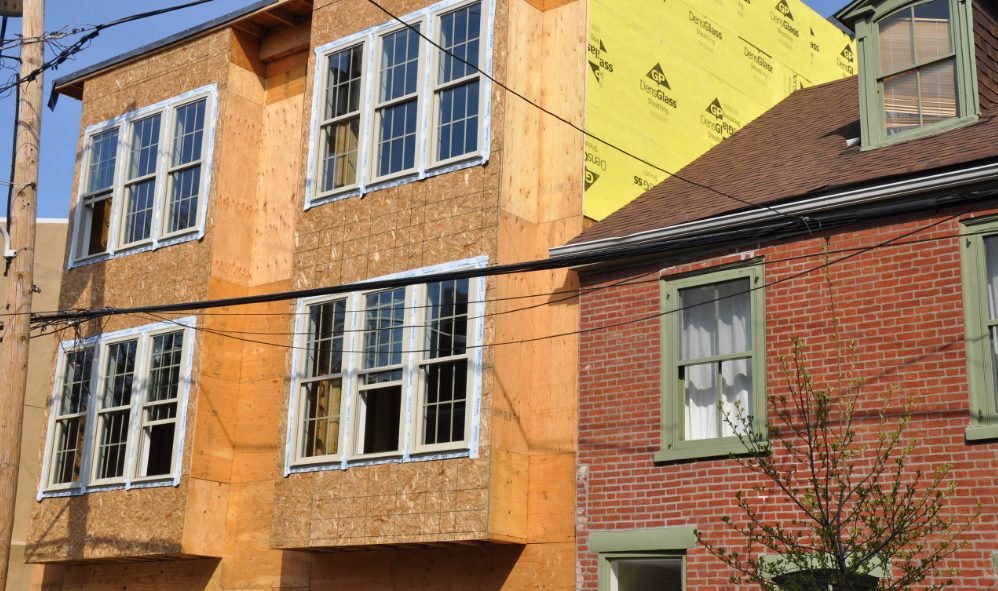Building your new home is one of the most fascinating projects and thrilling ventures of your life. At the same time is the biggest investment of your life, so every step should be treated with utmost seriousness.

By Phil Kean Designs Winter Park – See more Home Design Photos
You need to assimilate a huge amount of information concerning the types of construction, architecture, law, building codes and costs.
However, you can find a lot of information online or in different specialty magazines but let’s see together a succinct step-by-step guide that may help you in your enterprise.
1| CHOOSING the RIGHT HOUSE PLAN
Choosing a plan for your dream home is probably the most exciting and thrilling experience that you can have it. At this point, you can put into practice your dreams, wishes and prioritize your family needs.
The right home plan should be in accordance with your lifestyle, your budget, your lot size and of course, the architecture and building codes in the area where you live.
However, you need to check and verify the size and design of each room in part especially the master suite, bathrooms, kitchen, media room, dining room, since they are ones of the most lived rooms of your new home.
A good idea is to look for open floor plans. They will allow you to customize easily your dream home.
The Benefits of Using Pultruded Profiles | How To Build A House (howtobuildahouseblog.com)
2| HOME FOUNDATION
Pouring your home foundation is an extremely important part of the construction process. It is vital that the foundation casting to be executed correctly. In fact, the whole structure of your house depends on the proper execution of the foundation.
Each step of this process such as excavation, footings, sub-slab systems (plumbing lines, gas lines, etc), foundation walls, anchor bolts, damp-proofing, waterproofing, slab pouring, backfill, etc, must be performed carefully and correctly.
3| HOUSE FRAMING
Framing is the next step after the home foundation has been cast and the formwork boards removed.
The frame of a house is the skeleton of a building, is the home underlying structure. While your home framing progresses, you can see your home layout unfolding.
In fact, your home plans come alive. Now you can see in 3D the home blueprints. You will be able easily to identify every room, windows, stairways, and doorways.
4| CITY INSPECTIONS
Each stage of construction requires an inspection to see if the building complies with the building code of the area where you live. These inspections are extremely important and mandatory.
They are made by the city hall, which will send an inspector for each phase of construction. He will ensure that the construction phase has been completed correctly. This inspector will check also the mechanical components of your house, making sure they are installed properly and up to norms and codes.
5| HOME ENCLOSING
Once the home framing inspection is done, your builder may begin the next stage, which is the enclosing of the house. This process includes the roofing system, shingles, exterior sheathing, doors and windows. It is better, to select carefully your doors and windows, they being a visible part of the building. Make sure they have durability, performance and they are energy efficient.
6| HOUSE WRAPPING
House wrapping is another is another important stage of the building process.
Why is it important?
Home wrapping provides a protective and defensive barrier against moisture that could otherwise cause mildew, mold and wood rot. This barrier will keep all moisture outside of your home.
7| MECHANICAL INSTALLATION
Mechanical installation is extremely critical. It must be done before the sheetrock (drywall) installation. In fact, all the wiring and mechanical components must be installed before the drywall installation.
Mechanical installation means many things such as fire sprinkler system, plumbing components, venting, ductwork, HVAC system, electric components, entertainment system, etc. At this point you need to decide which mechanical components want to be installed before the home exterior finishes and drywall installation to start.
8| HOME INSULATION
Insulation is another factor that you have to take in consideration. In fact, this factor is critical in determining your house’s energy efficiency.
This quite inexpensive product can save you a lot of money over time, if it is installed properly and adequately in your home’s walls, ceilings and floors. It will prevent heat from escaping or entering your home.
9| DRYWALL (SHEETROCK)
Drywall installation is the next step after your home is finally framed and wrapped and of course, the mechanical installation is done.
Sheetrock (drywall) is put in place to form your home walls. Your builder will consult you to find what kind of drywall do you want. You need to decide the type of texture, the thickness and the paint.
10| INTERIOR WORK
Interior work is the next stage after wall the structural works are done. Now it is the right time for you to move to the decorative details of your new home.
You need to consult with your family and decide on countertops, cabinets, fireplaces, flooring, interior doors, staircase railings and balusters, moldings, door trims, baseboards, etc. These details will transform the house into your home.
11| FINISHING STAGES
In many ways, this stage is similar with previous stage, interior work. However, this is the final step in this great enterprise. You will have tried many mixed feelings such as anticipation, excitement, impatience and perhaps anxiety. It is understandable, because the hardest part of the work is done and your project is taking shape.
Now, you need only to choose the bathroom fixtures and accessories, the appliances, light fixtures and much more.
Next step is ‘Moving into your New Home”.


